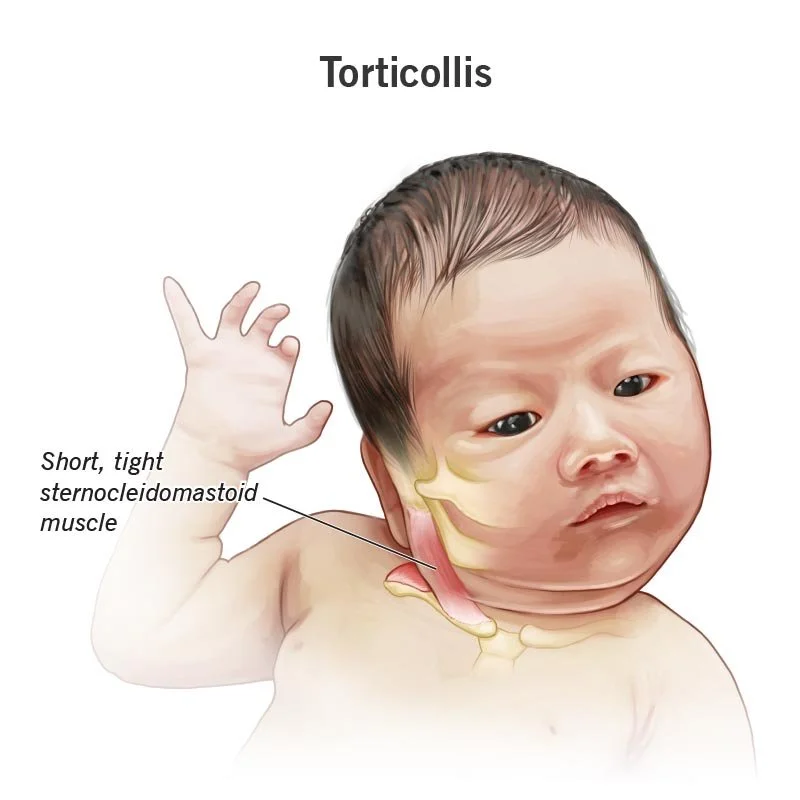How does it develop?
Torticollis can develop from a variety of causes. It can either be congenital (born with) or acquired (occurs after birth). Some causes include immobilization in the womb, prolonged limitations in certain positions, hypotonia (low muscle tone), excessive container use, oral dysfunction, cranial nerve dysfunction, vision issues, GERD, and other diseases/injuries.

